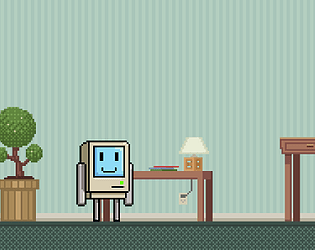Hey, thanks for playing
JohnFu11er
Creator of
Recent community posts
When I started, I used the tutorials created by Brackeys on youtube: https://www.youtube.com/c/Brackeys If you're new to coding all together, I would stay with a monolithic script approach to handle your game objects, and keep the game small. If you're pretty familiar with the basics of OOP and want to get a little deeper into structuring your projects in a more scalable way, I recommend the content from Infallible Code: https://www.youtube.com/c/InfallibleCode. Also, hit me up if you got any questions, and I'll help where I can. I'm still learning, but I've been at it for about two years. Good luck!
Nice artwork, and sound. It reminds me of an old Atari style game. I found the movement a little floaty for my tastes, but was able to move around alright. I like how you have room views, and larger (multi-room) views; it breaks up the gameplay in a pleasant way. One thing I would change is the sensitivity of the shield that repels enemy bullets; instead of letting it face any direction, make it only able to face in 8 directions. Good work on making a playable game.
This game is lots of fun! Great entry! I love the music, the controls felt smooth, and the art was good. All around a great game to play. The auto target ability really allowed me to move around more and not focus on pointing the player at the character that I wanted to shoot at. That was a nice touch. Lastly, the start screen looks very nice. I really like the layers you have built up in the artwork.
Hi, thanks for playing the game, and the great feedback. Yeah, having to reset the puzzle by doing the previous one does make the game-play a little tedious at times. I think I'd add a "reset" trigger that a player could jump on, or a door that they could go through to reset a puzzle. Maybe next time. Thanks again. Glad you liked it.
What gave you the idea for the game? I was really impressed with the idea of just listening to someone's voice and avoiding the directions that you heard tones in. Technologically it reminds me of the Glide Slope Indicator technology used on airfileds to land airplanes. In that technology two radio frequencies are projected down a runway and the landing airplane has to fly between them. The pilots don't hear the frequencies, but the plane's instruments turn the signals into visual indicators that tell the pilots how far right or left of the runway center line they have drifted.




